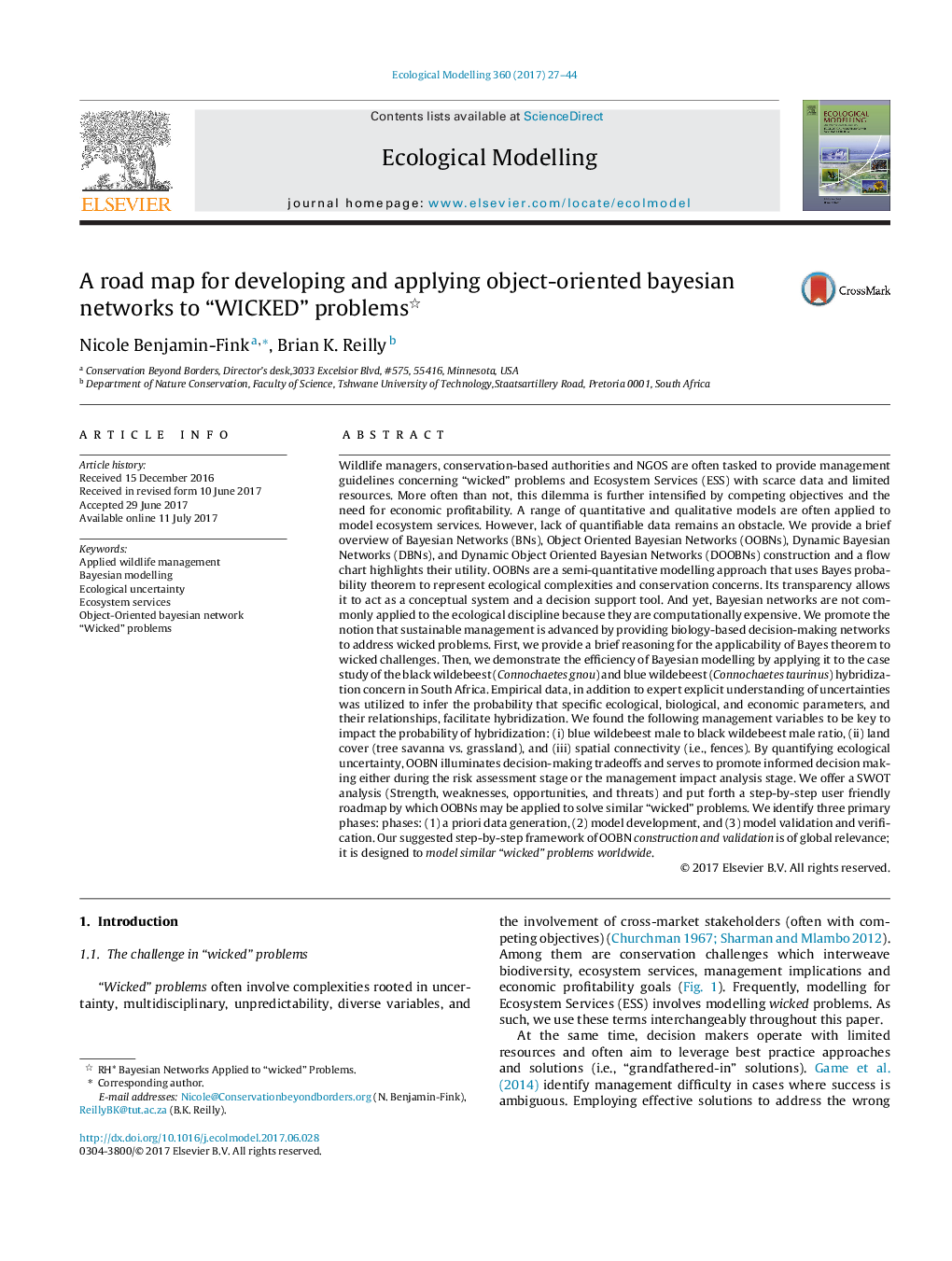| کد مقاله | کد نشریه | سال انتشار | مقاله انگلیسی | نسخه تمام متن |
|---|---|---|---|---|
| 5742045 | 1617387 | 2017 | 18 صفحه PDF | دانلود رایگان |

Wildlife managers, conservation-based authorities and NGOS are often tasked to provide management guidelines concerning “wicked” problems and Ecosystem Services (ESS) with scarce data and limited resources. More often than not, this dilemma is further intensified by competing objectives and the need for economic profitability. A range of quantitative and qualitative models are often applied to model ecosystem services. However, lack of quantifiable data remains an obstacle. We provide a brief overview of Bayesian Networks (BNs), Object Oriented Bayesian Networks (OOBNs), Dynamic Bayesian Networks (DBNs), and Dynamic Object Oriented Bayesian Networks (DOOBNs) construction and a flow chart highlights their utility. OOBNs are a semi-quantitative modelling approach that uses Bayes probability theorem to represent ecological complexities and conservation concerns. Its transparency allows it to act as a conceptual system and a decision support tool. And yet, Bayesian networks are not commonly applied to the ecological discipline because they are computationally expensive. We promote the notion that sustainable management is advanced by providing biology-based decision-making networks to address wicked problems. First, we provide a brief reasoning for the applicability of Bayes theorem to wicked challenges. Then, we demonstrate the efficiency of Bayesian modelling by applying it to the case study of the black wildebeest (Connochaetes gnou) and blue wildebeest (Connochaetes taurinus) hybridization concern in South Africa. Empirical data, in addition to expert explicit understanding of uncertainties was utilized to infer the probability that specific ecological, biological, and economic parameters, and their relationships, facilitate hybridization. We found the following management variables to be key to impact the probability of hybridization: (i) blue wildebeest male to black wildebeest male ratio, (ii) land cover (tree savanna vs. grassland), and (iii) spatial connectivity (i.e., fences). By quantifying ecological uncertainty, OOBN illuminates decision-making tradeoffs and serves to promote informed decision making either during the risk assessment stage or the management impact analysis stage. We offer a SWOT analysis (Strength, weaknesses, opportunities, and threats) and put forth a step-by-step user friendly roadmap by which OOBNs may be applied to solve similar “wicked” problems. We identify three primary phases: phases: (1) a priori data generation, (2) model development, and (3) model validation and verification. Our suggested step-by-step framework of OOBN construction and validation is of global relevance; it is designed to model similar “wicked” problems worldwide.
Journal: Ecological Modelling - Volume 360, 24 September 2017, Pages 27-44